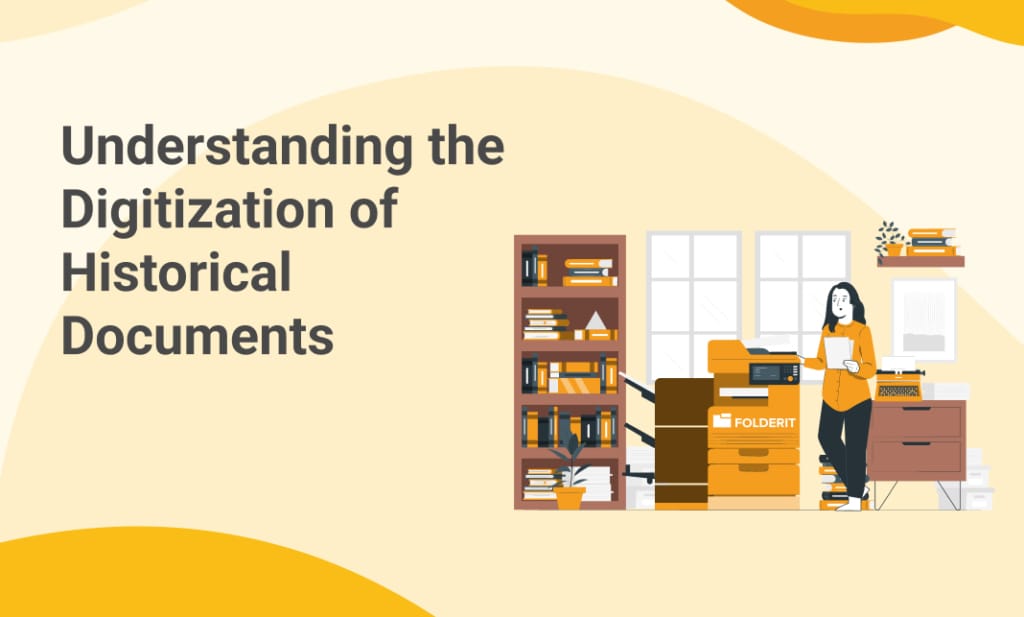In an era where the past intertwines seamlessly with the present, the preservation of historical documents stands as a beacon of heritage and knowledge.
These documents, be it ancient handwritten texts, old printed copies, or records preserved on microfilm, hold the essence of time, narrating stories and events that have shaped the world as we know it.
However, with the wear and tear of time, these invaluable assets are at a constant risk of deterioration. This is where the digitization of historical documents steps in as a savior, ensuring that the rich tapestry of history remains intact and accessible for generations to come.
The Imperative Need for Digitization
Preserving the Invaluable
Historical documents are not just pieces of paper; they are a treasure trove of information, offering insights into the lives, places, and events of yesteryears. These documents, often fragile and aging, demand careful preservation to prevent the loss of valuable information. Government agencies, libraries, and various institutions hold a rich repository of records including birth certificates, marriage documents, land records, maps, and other archival material. However, accessing these documents in their physical form is not only challenging but also poses a risk to their longevity.
Facilitating Efficient Research
The traditional method of researching through hard copy newspapers, microfilms, and other physical records is a time-consuming affair. It involves thumbing through old newspapers page by page or scrolling through rolls of microfilm to extract information. Digitization transforms this process, making online research a possibility. It allows for keyword searches, enabling users to find archived information within seconds, thereby saving time and improving the accuracy of research or record verification.
The Benefits of Digitization
Enhancing the Quality of Records
Digitization is not merely a process of converting physical documents into a digital format; it is an opportunity to enhance the quality of these records. Many historical documents may have yellowed over time or have faded ink. The digitization process includes image enhancement services that improve the quality of scanned images, preserving historical information more accurately and maximizing the value of information in legacy document archives.
Preserving Original Documents
Physical records, including newspapers and microfilms, deteriorate with each use and as time passes. Digitization helps in preserving these original documents, extending their life by limiting their handling to staff members only. This process not only facilitates more efficient research but also aids in preserving physical records from further deterioration.
Enabling Remote Access
The recent pandemic underscored the importance of remote access to documents. Organizations, both public and private, were compelled to work remotely, necessitating online access to documents and records to maintain functionality. Digitization has revolutionized the way students, researchers, and historians conduct research, broadening the scope of historical information reviews and adapting to the changing dynamics of the world.
The Process of Digitization
The digitization of historical documents is a tailored process, customized to meet specific requirements. It begins with gathering project requirements and objectives, followed by the safe transportation of documents to the scanning bureau or setting up scanners at the designated site. The documents are then prepped for scanning, with any damaged documents undergoing repairs. The subsequent steps involve scanning and image enhancement, OCR/ICR for indexing and classification, and formatting data to meet output specifications.
The Role of Document Management Systems in Digitization
Document Management Systems (DMS) have emerged as powerful tools that facilitate the digitization process. These systems not only aid in the conversion of physical documents to digital formats but also ensure their organized storage, easy retrieval, and secure access.
Streamlined Workflow
A robust DMS streamlines the workflow associated with the digitization of historical documents. From the initial stages of scanning and image enhancement to the final steps of indexing and classification, a DMS ensures a seamless transition of documents from their physical to digital avatars. This organized approach minimizes errors, enhances efficiency, and ensures that the integrity of the documents remains uncompromised.
Enhanced Security and Accessibility
One of the primary concerns associated with historical documents is their security. Given their irreplaceable nature, it’s imperative to safeguard them against potential threats, be it physical damage or unauthorized access. A DMS provides multiple layers of security, ensuring that the digitized documents are protected from cyber threats and unauthorized access. Moreover, with cloud-based storage solutions, these documents become accessible from anywhere, anytime, ensuring that researchers and historians can delve into the annals of history without geographical constraints.
Collaboration and Sharing
The digitization of historical documents is not just about preservation; it’s about making history accessible to all. A DMS facilitates collaboration, allowing multiple users to access, edit, and share documents in real-time. This collaborative approach ensures that historical documents are not just preserved in digital silos but are actively used, discussed, and analyzed, keeping history alive and relevant.
The Future of Historical Document Digitization
As technology continues to evolve, the process of digitizing historical documents will witness further innovations. Advanced scanning technologies will ensure higher resolution images, while AI-driven tools will automate the process of indexing and classification. Moreover, with the advent of technologies like Augmented Reality (AR) and Virtual Reality (VR), the way we interact with historical documents will undergo a paradigm shift. Imagine walking through a virtual archive, picking up ancient manuscripts, and reading them as if they were right in front of you!
Bridging Past and Present with Folderit
The meticulous planning and execution involved in the digitization of historical documents serve as a vital conduit between the past and the present. It not only preserves the rich tapestry of history but also makes it readily accessible to future generations, fostering a deeper understanding and appreciation of our heritage.
Platforms like Folderit are poised to play a significant role in this transformative journey. By offering a secure and user-friendly interface for document management, Folderit facilitates the seamless integration of historical narratives into the digital realm, ensuring that the echoes of history continue to resonate in the modern world.



